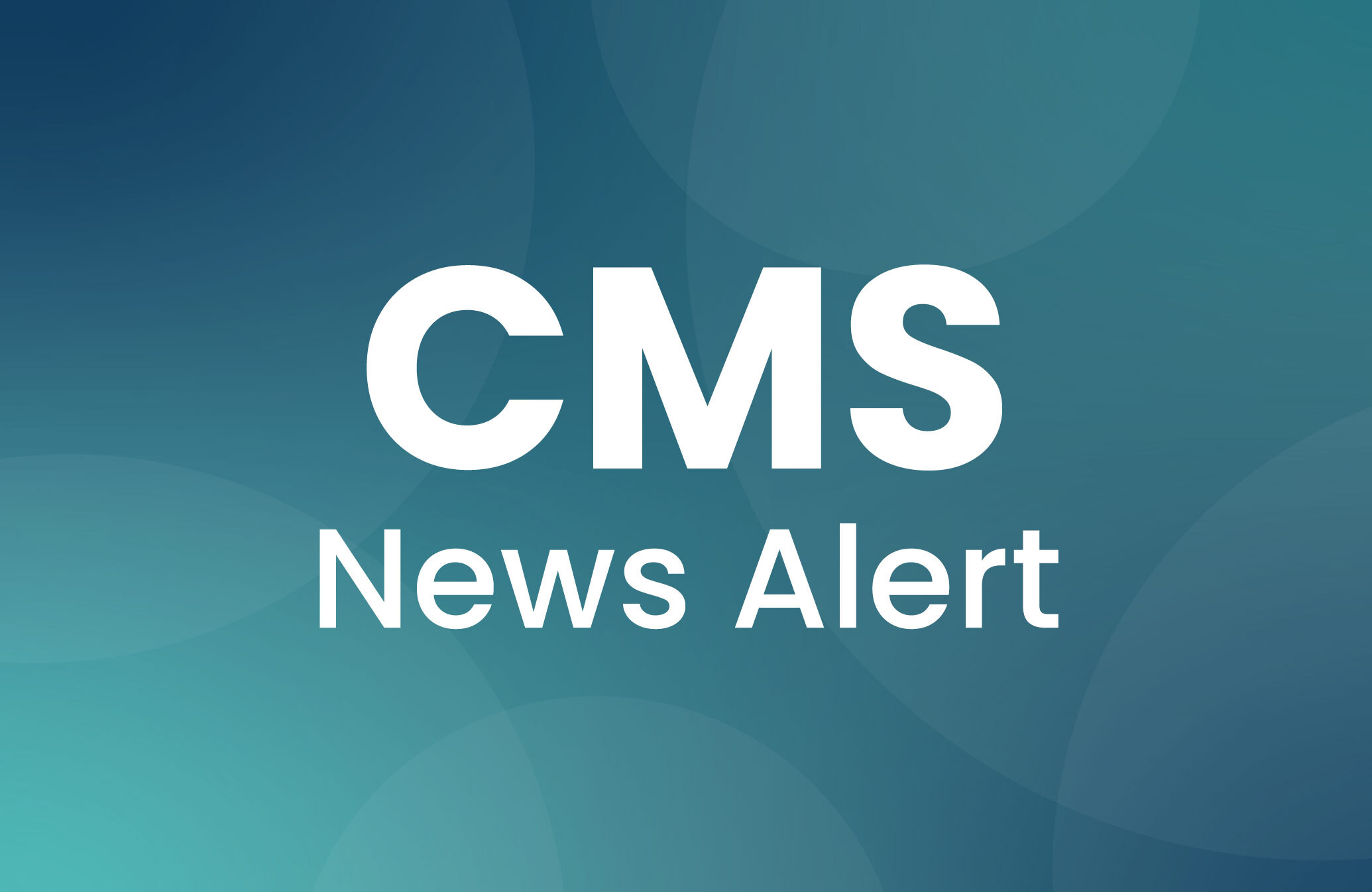On May 22, 2020, the Centers for Medicare & Medicaid Services (CMS) issued a final rule (2020 Final Rule) codifying a subset of proposals from the February 2020 proposed rule. These rules address regulatory action needed for the 2021 bid submissions and from the 21st Century Cures Act (Cures Act).
Other changes in the Interim Final Rule (IFR), issued March 30, 2020 were adopted in the 2020 Final Rule. Other proposed rules will be addressed in subsequent regulatory action which will be applicable January 1, 2022.
The following addresses some of the key areas of the administrative rulemaking. All are effective January 1, 2021 except the Tukey outlier deletion which is effective January 1, 2022 (which coincides with the 2024 Star Ratings produced in October 2023). Importantly, there are other changes that go into effect January 1, 2022, and January 1, 2023 but they are not addressed here.
Measure Weight Changes
CMS reaffirmed its pledge to put patients first and empower them to engage with their providers to enable better healthcare decision-making. To best meet the needs of beneficiaries, CMS believes in the need to listen to members perceptions of and access to care. Studies cited in the 2020 Final Rule provide evidence that better patient experience is associated with better patient adherence to recommended treatment, clinical processes, hospital patient safety culture, clinical outcomes, a reduction in unnecessary healthcare use, and fewer in-patient complications.
Emphasizing the uncertainty created from the pandemic and the criticality for plans to be focused on patient experience, CMS believes plans need to “enhance patient experience to deal with the challenges of the COVID-19 pandemic, to work with beneficiaries in customized ways, and be as supportive as possible.”
CMS finalized its proposal to increase the weight of patient experience, complaints, and access measures from a weight of 2 to 4. The measures include the patient experience of care measures collected through the CAHPS survey, Members Choosing to Leave the Plan, Appeals, Call Center, and Complaints measures. The change in weight does not impact Stars at the measure level, rather the overall and summary ratings calculation, and will not impact the distribution of Stars which varies for each of these measures.
Twenty-five percent of the Star Measures are patient experience and complaint measures. By shifting the weight from 2 to 4 dramatically increases these measures’ importance and reinforces the need for plans to focus on patient satisfaction and respond quickly to consumer needs and complaints.

Still looking for more of the latest insights on health action?
Sign up for our newsletter so you never miss a thing!
Part D Statin Use in Persons with Diabetes Measure Weighting
CMS proposed reclassifying the Statin Use in Persons with Diabetes (SUPD) measure from an intermediate outcome measure to a process measure, starting with the 2023 Star Ratings, due to feedback in response to the Draft 2020 Call Letter and to align with the measure steward’s clarification regarding the measure’s classification.
Currently, the SUPD measure requires two diabetes medication fills to meet the denominator while only a single fill of a statin therapy is required to meet the numerator criteria. Outcomes are not measured in SUPD since it only requires a single fill of a statin medication. Because of this, CMS noted that SUPD is a process measure that is based on a procedural intervention and does not capture a therapeutic outcome since SUPD does not monitor the medication adherence of a statin over a course of treatment.
Also, classifying SUPD as a process measure creates consistency with the Part C Statin Therapy for Patients with Cardiovascular Disease measure. Therefore, CMS changed the intermediate outcome measure classification for the SUPD measure to a process measure, starting with the 2023 Star Ratings, based on data from the 2021 measurement period. This changes the measure weight from 3 to 1.
Outlier Changes
CMS is finalizing its proposal to directly remove outliers prior to calculating the cutpoints to increase the predictability and stability of the Star Rating system. CMS is using the Tukey outlier detection method prior to clustering, which is a standard statistical methodology for removing outliers, to increase the stability and predictability of the non-CAHPS measure cut points. We expect this will make Star Ratings more difficult to achieve for several of the metrics. CMS acknowledges that many of these changes are being done as cost savings measures and to preserve the Medicare Trust Fund as further discussed below.
The biggest concern for plans relates to C28, C31, and C33 as these will be the measures with the largest cut point swings. In addition, C09, C11, C14, C15, C20, and C32 will experience minimal change, and the remainder no change. No CAHPS measures are included in the outlier detection.
This finalized change may have unintended consequences. Since this may increase the difficulty for lower rated plans to achieve even modest rating increases, plans may forgo investing in improvements knowing the increased difficulty in improving ratings. In addition, this may encourage the continuation of plan consolidation with poorer performing plans being acquired and, through the CMS rules, assume the acquiring plans higher rating. This would undermine and negate the goals driving outlier detection.
Moving forward with the Tukey outlier deletion and increase in weight in patient experience, complaints, and access measures, would generate net savings such that costs associated with increasing the patient experience and compliant measure weights offset by the Tukey outlier deletion.
CMS plans to display simulations of Tukey outlier deletion with mean resampling and guardrails for contracts to view in HPMS for the 2021, 2022, and 2023 Star Ratings prior to implementing the Tukey outlier change effective with the 2024 Star Ratings. These simulations will use the actual data that will be populating the 2021, 2022, and 2023 Star Ratings and will include all of the changes finalized related to cut point calculations.
Codification of Star Rating Changes
CMS has consistently recognized that there may be a COVID-19 impact on Star Rating measure scores. COVID-19 is also a reason for delaying the implementation of Tukey outlier deletion for an additional year to allow these impacts to play out before adding an additional methodological change for the cut point calculations.
The IFC addressed the COVID-19 impact of the pandemic on the Part C and D Star Ratings program and made additional modifications for the 2022 Star Ratings, in recognition that the COVID-19 pandemic may impact performance on the Star Ratings measures during the 2020 measurement period. In addition to using the HEDIS measures scores and ratings from the 2020 Star Ratings (based on care delivered in 2018) and CAHPS measures data scores and ratings from the 2020 measure-level Star Ratings for 2021 Star Ratings, CMS delayed the implementation of guardrails to allow non-CAHPS measure cut points to adjust to changes in industry performance for the 2020 measurement period.
Specifically, for the 2020 measurement year, by delaying the implementation of guardrails, cut points will adjust downward if industry performance broadly declines due to COVID-19. As a result, CMS changed the applicability date of the guardrails policy from January 1, 2020 to January 1, 2021, delaying implementation of the 5 percentage point cap so that cut points for the 2022 Star Ratings can change by more than 5 percentage points if national performance declines overall.
Additionally, CMS expanded to all plans (not just high performing plans) the hold harmless provisions for the Part C and D improvement measures that are based on the 2020 measurement period so that those measures where there is a significant decrease in performance will not bring down a contract’s overall or summary ratings for the 2022 Star Ratings. Plan results will be calculated with and without the 5x Health Plan Improvement and Drug Improvement measure. Between both calculations the higher rating will be applied to the plan’s rating.
More on Supplemental Benefits
For the last two years, CMS has expanded a plan’s ability to offer supplemental benefits. This includes extending benefits to areas not previously covered such as transportation, food, and housing. To support this expansion and reinforce prior guidance, CMS finalized the change to the medical loss ratio (MLR) as it relates to supplemental benefits.
One of the areas plans include in the MLR numerator is “incurred claims,” which includes those paid to “providers” for covered services furnished to all enrollees. “Provider” is defined as “any individual or entity that is engaged in the delivery of healthcare services in a state and is licensed or certified by the state to engage in that activity in the state, or to deliver those services if such licensing or certification is required by state law and regulation.” This change allows plans to include in the MLR as “incurred claims” all amounts a plan pays for covered services, including those spent on supplemental benefits.
In addition, there is greater flexibility in what is considered a supplemental benefit. The Bipartisan Budget Act of 2018 did the following:
- Authorize MA plans to provide additional supplemental benefits that have a reasonable expectation of improving or maintaining the health or overall function of the chronically ill enrollee to chronically ill enrollees
- Permit those additional supplemental benefits to be not primarily health related
- Define “chronically ill enrollee” to limit eligibility for these additional supplemental benefits
- Authorize CMS to waive uniformity requirements in connection with providing these benefits to eligible chronically ill enrollees.
These benefits are referred to as Special Supplemental Benefits for the Chronically Ill (SSBCI).
The Act and codified regulation define a list of what falls into the category of SSBCI. The 2020 Final Rule allows an MA plan to consider any chronic condition not identified on the list if that condition is life threatening or significantly limits the overall health or function of the enrollee. CMS explained this was based on the policy goal of allowing MA plans the flexibility to continue to innovate around providing care for their specific plan populations. CMS may publish a non-exhaustive list of complex conditions for purposes of SSBCI.
Plans are not required to submit to CMS the processes used to identify chronically ill enrollees that meet the 3-pronged definition of chronically ill enrollee. However, plans should describe the chronic conditions for which they will offer SSBCI in the notes field in the plan benefit package submitted to CMS. The 3 criteria specified in the Act for who is considered “chronically ill” must be met for an enrollee to be eligible for the SSBCI.
Telehealth Enablement
Last, CMS is incentivizing plans to give beneficiaries a greater ability to use telehealth providers in the specialties of Dermatology, Psychiatry, Neurology, Otolaryngology, Cardiology, Ophthalmology, Allergy and Immunology, Nephrology, Primary Care, Gynecology/OBGYN, Endocrinology, and Infectious Diseases. This incentive is in the form of a 10% credit towards network adequacy standards. The goal is to foster a greater use of contracting for telehealth services and increases beneficiary choice.
Summary
These changes center around a need for budget neutrality and cost savings to preserve the Medicare Trust Fund. The patient experience and complaints measures create a net cost for 2024 since the increase in weight results in an overall increase in the highest ratings for MA contracts. The higher Star Rating will result in a higher Quality Bonus Payment for the MA organization, which translates into a higher rebate share.
Cost increases from the proposed changes are offset by adding the Tukey outlier deletion since, CMS predicts, “in future years …. there is an overall decrease in the highest ratings for MA contract,” which provides CMS cost savings. With the Tukey outlier deletion beginning one year later than proposed, the net cost for the patient experience and complaints measure for 2024 is $345.1 million. With the addition of the Tukey outlier deletion there is projected to be a net savings of $999.4 million by 2030.
Many of the changes continue to reinforce CMS’ member-centric framework and desire to increase access to care (especially in light of COVID-19), while controlling and reducing costs to the system. To capitalize on and reinforce these changes, and to realize improvements, plans must implement personalized member activation and engagement. It is important to continue to create programs that measure member satisfaction, provide insights into health outcomes, and creatively and nimbly drive engagement in the programs launched from the policy changes.


